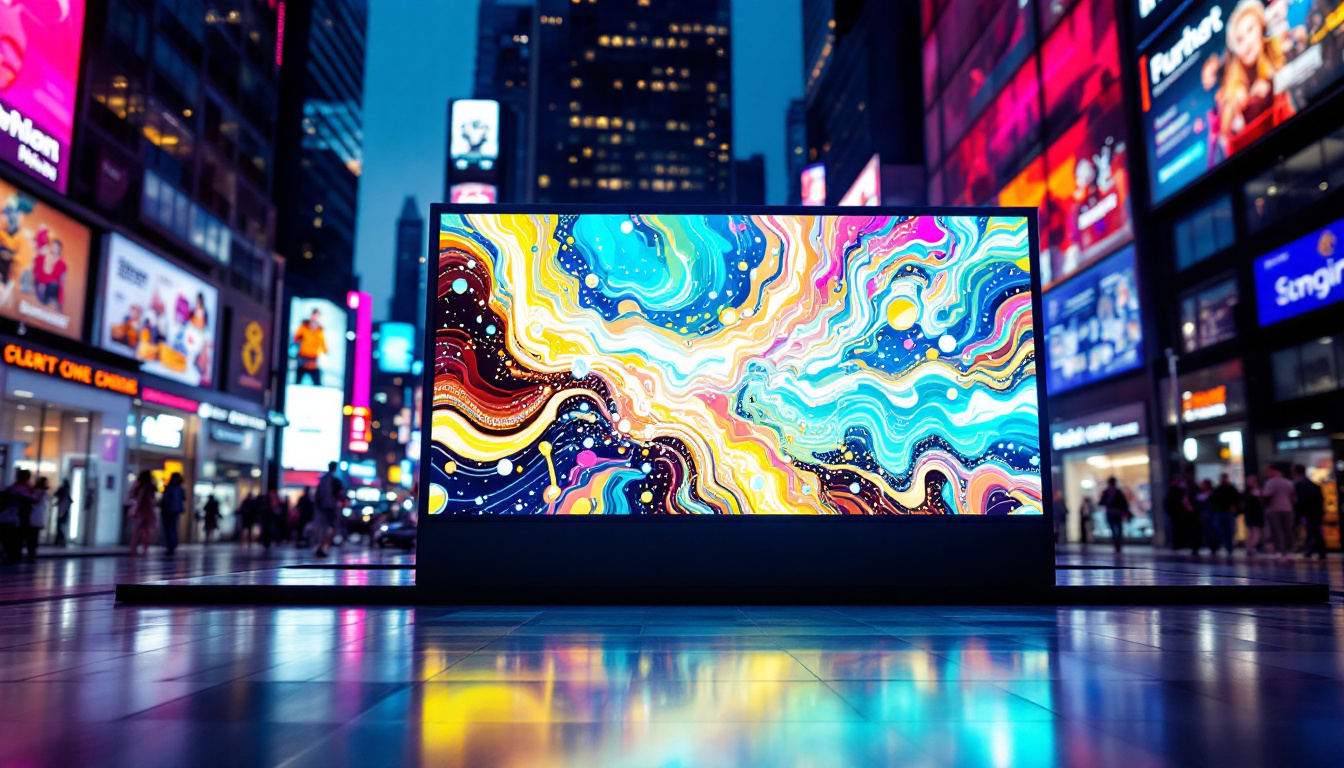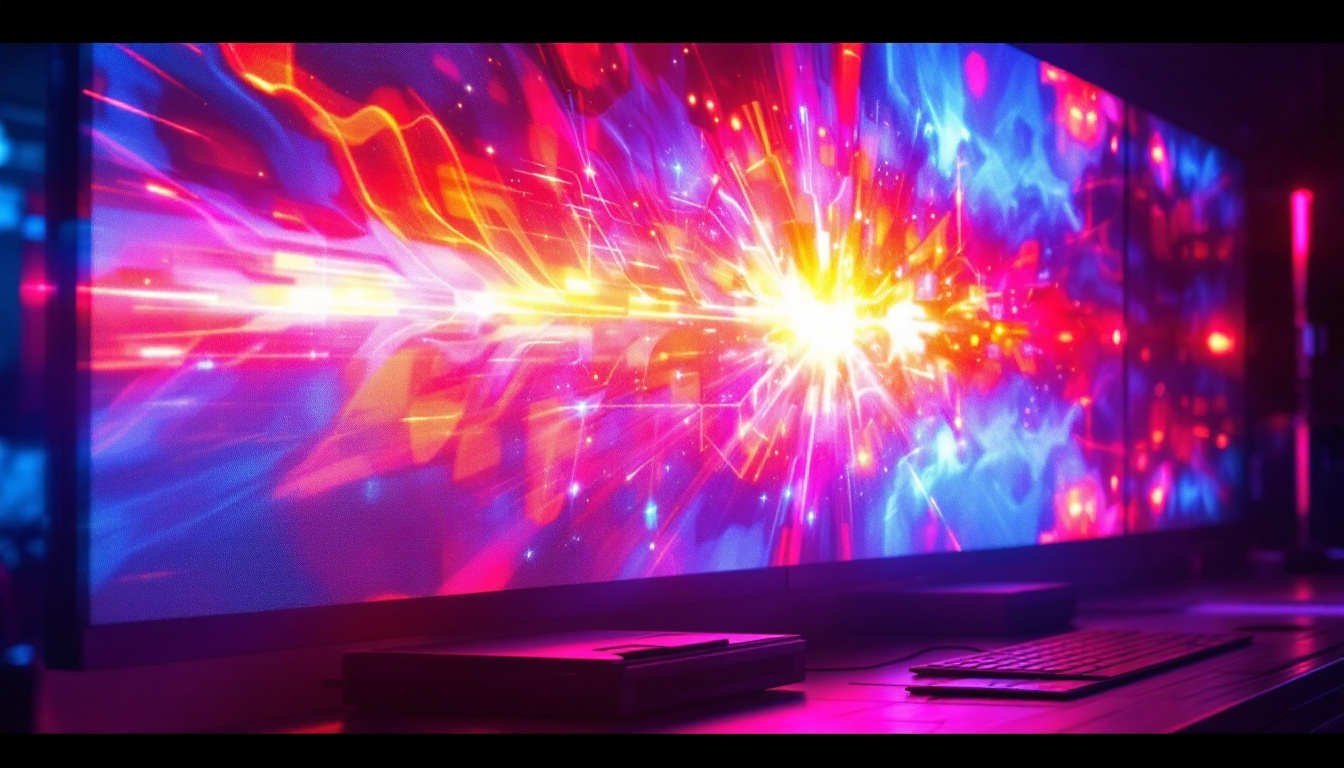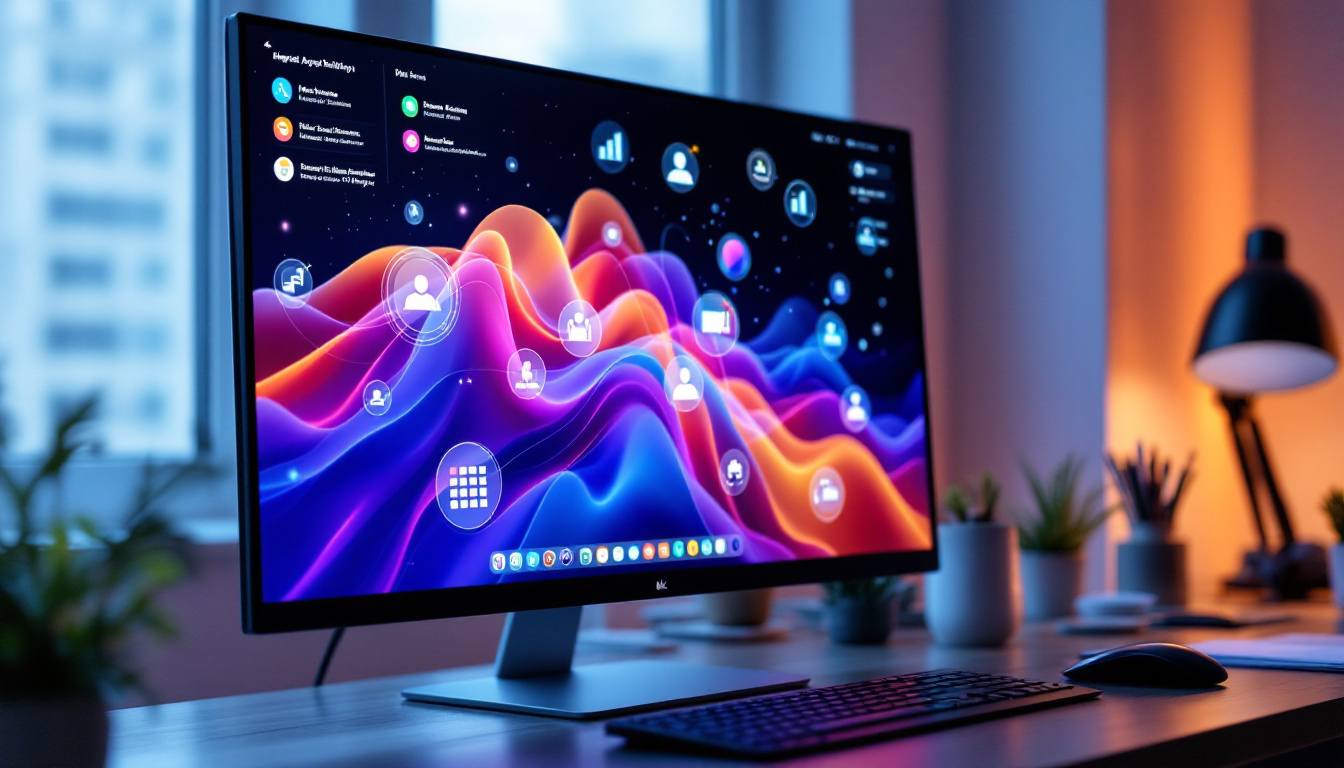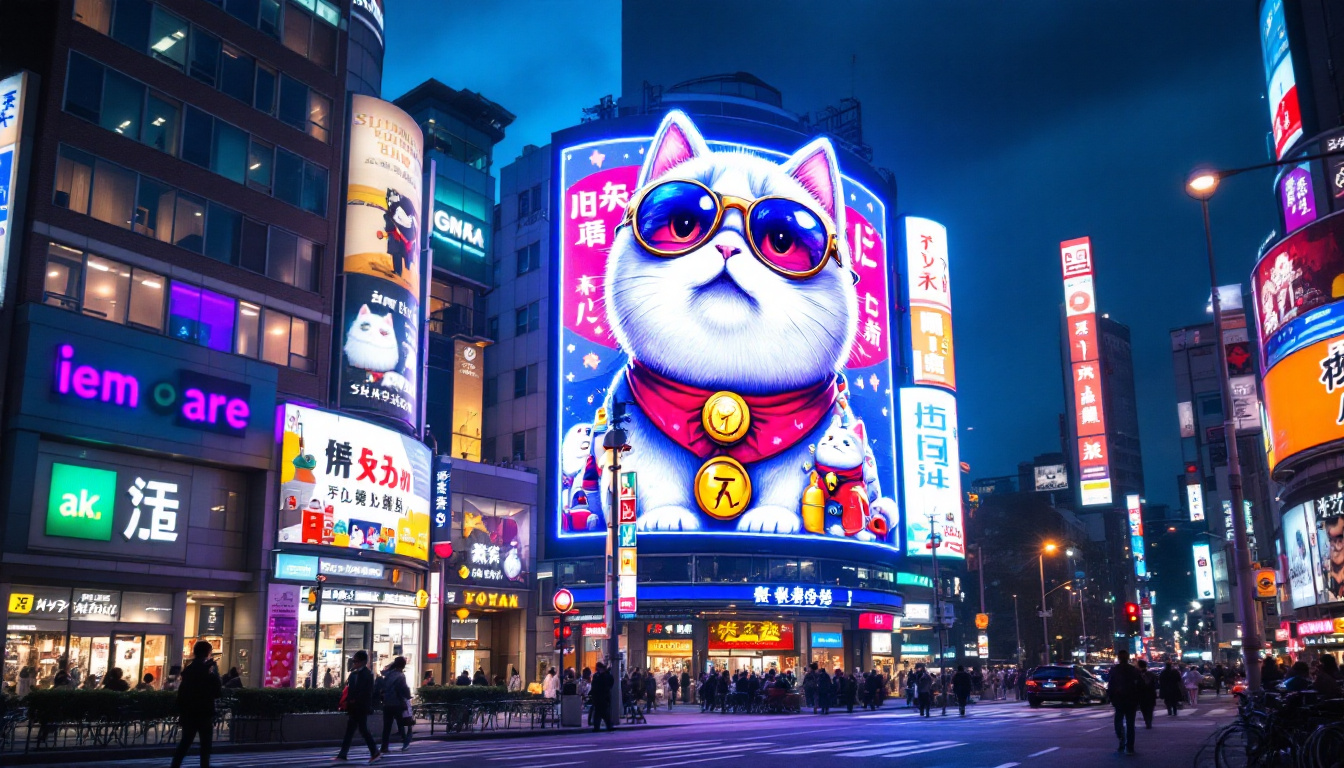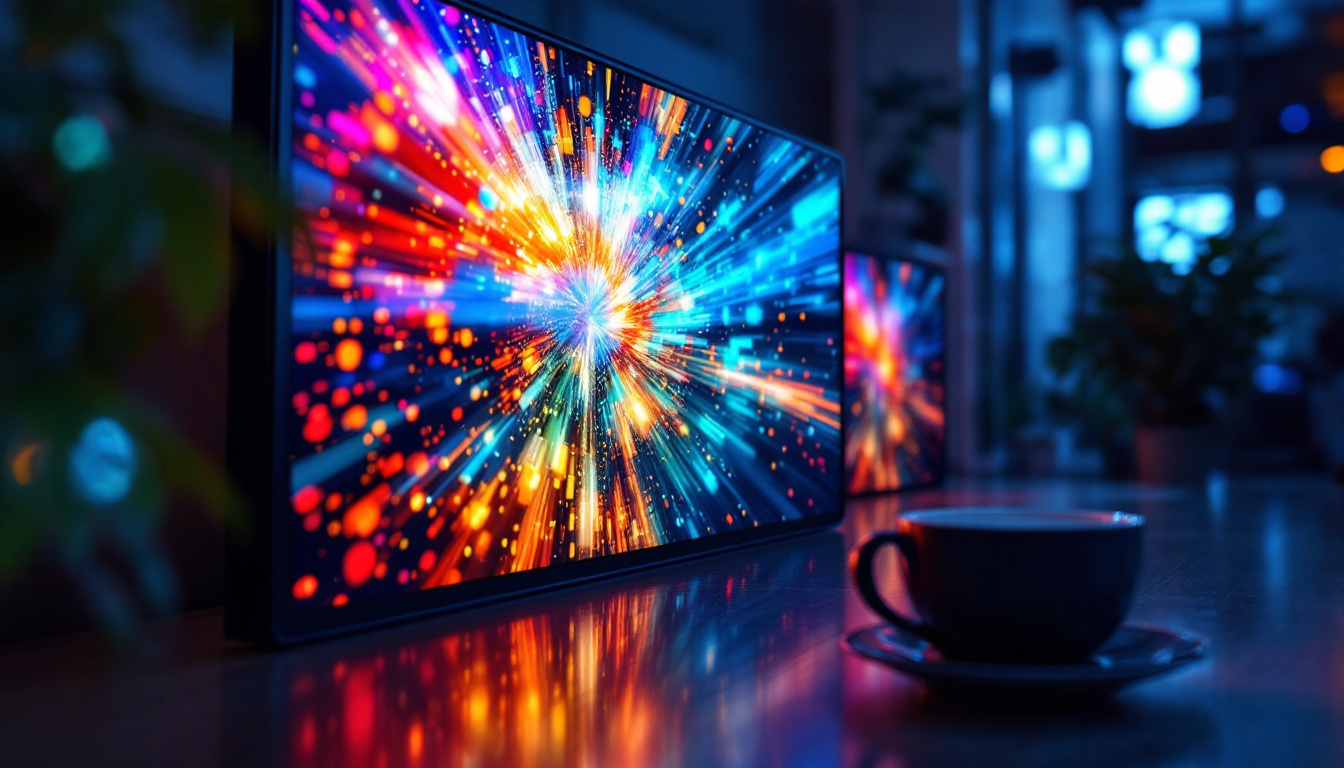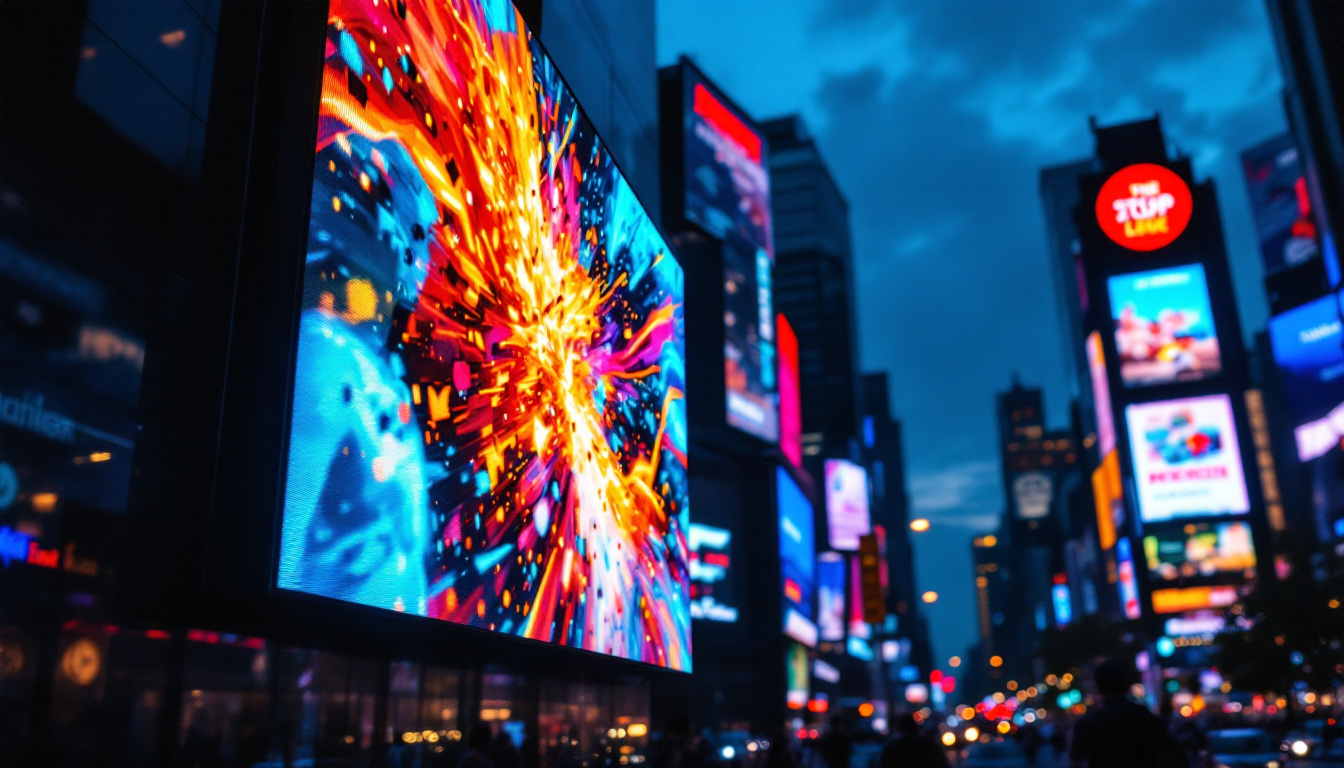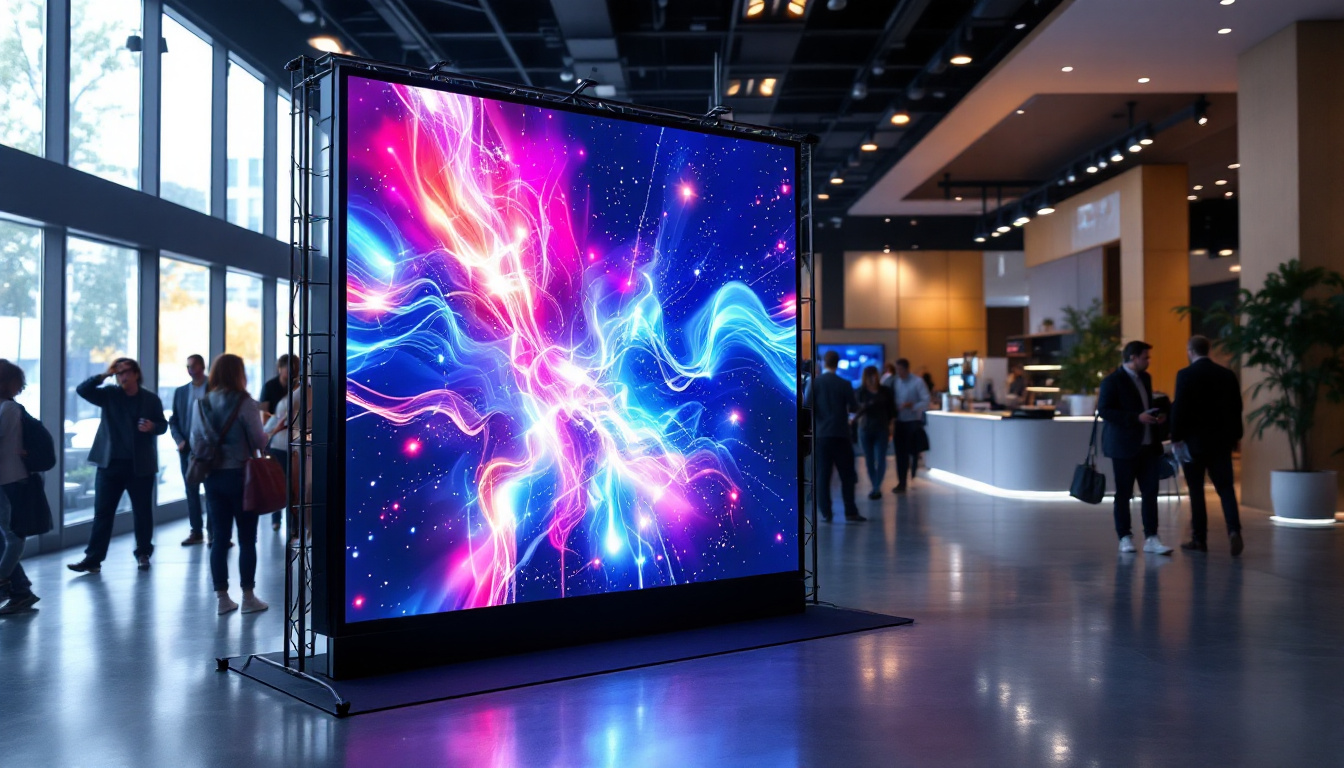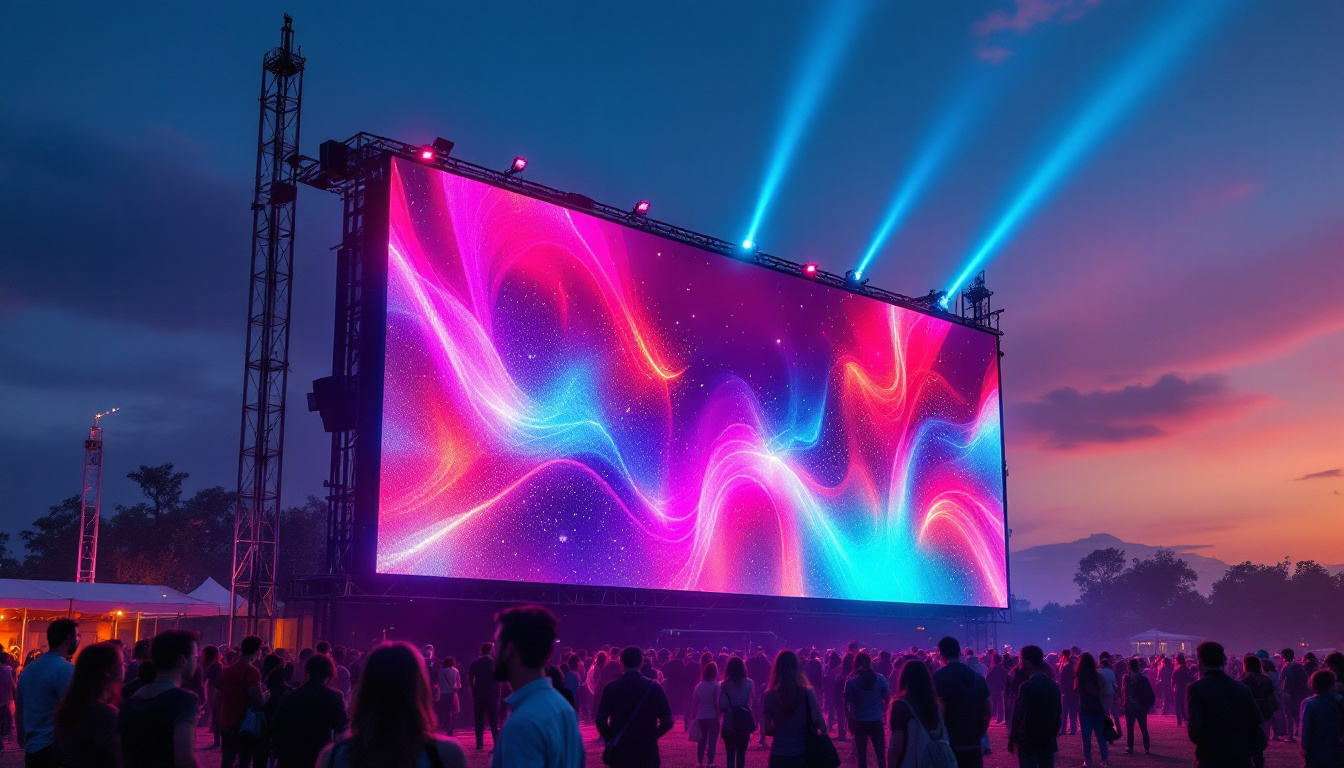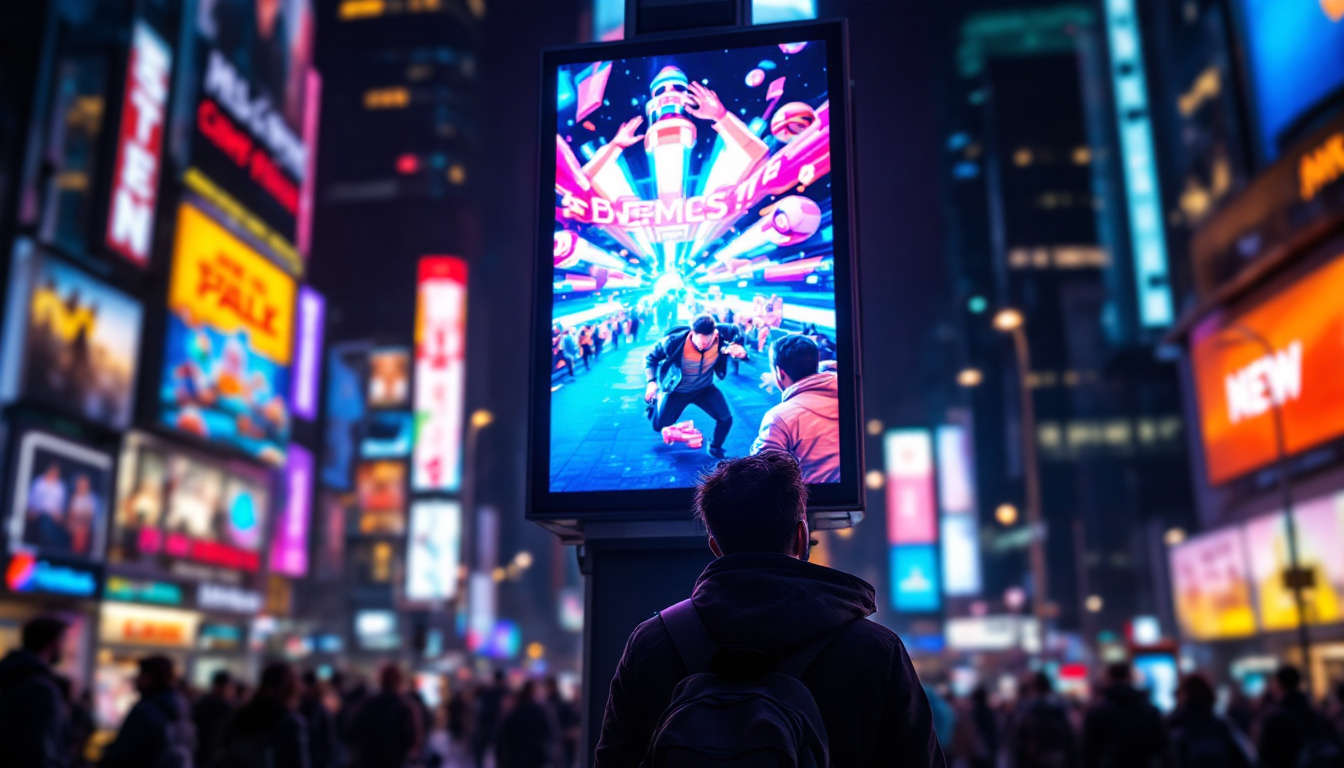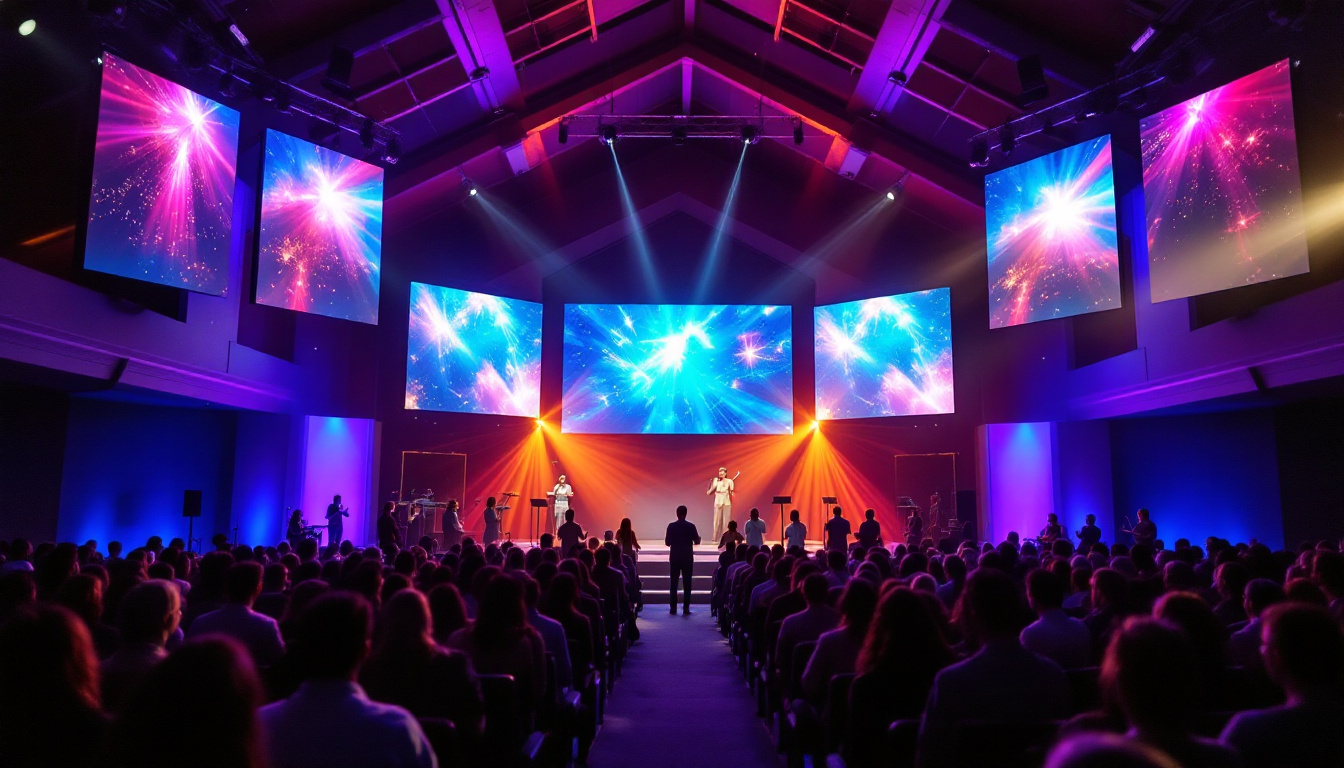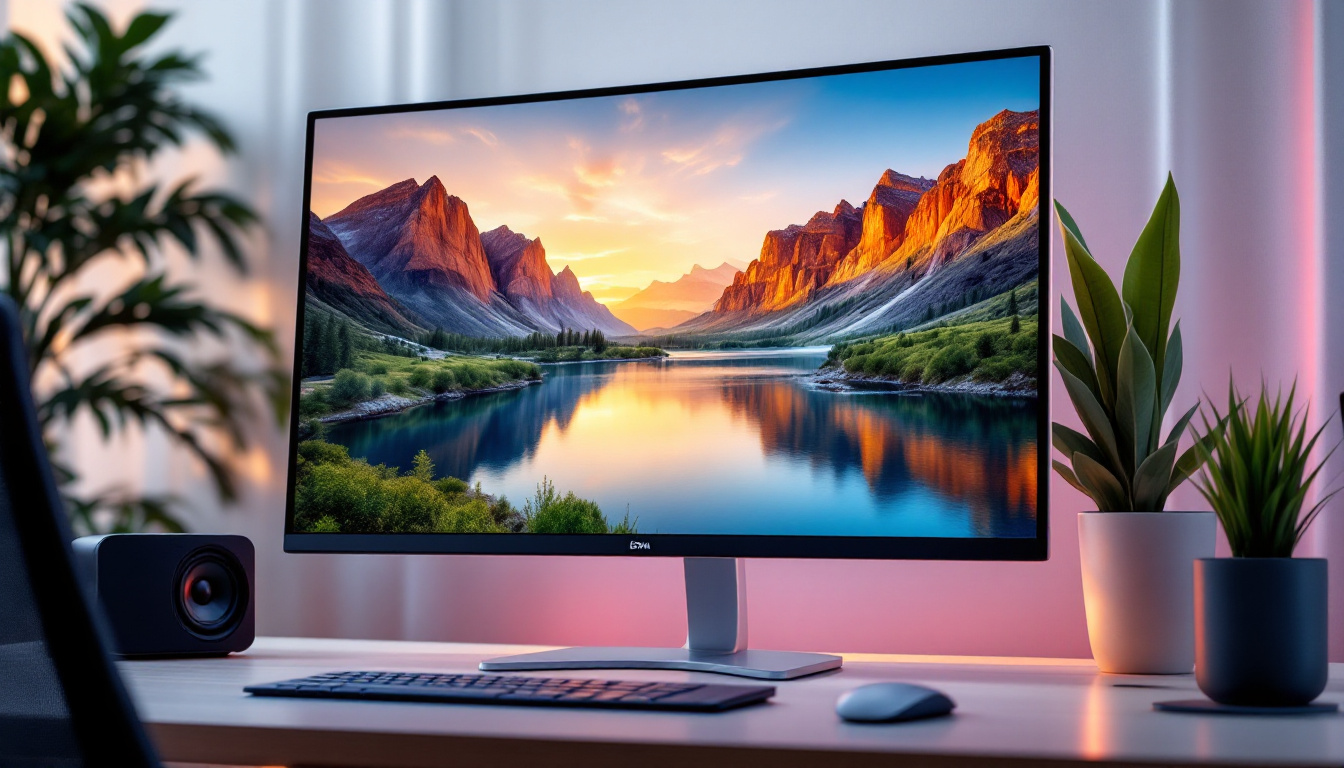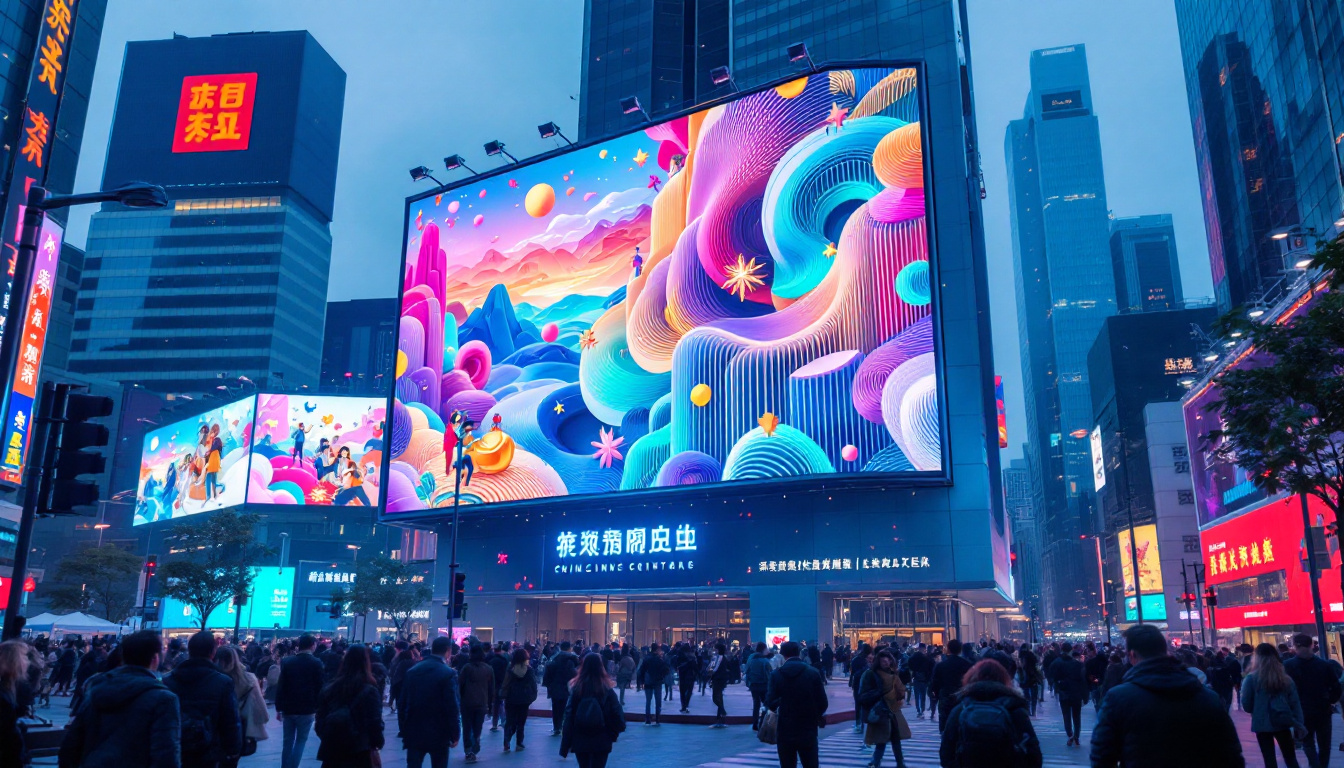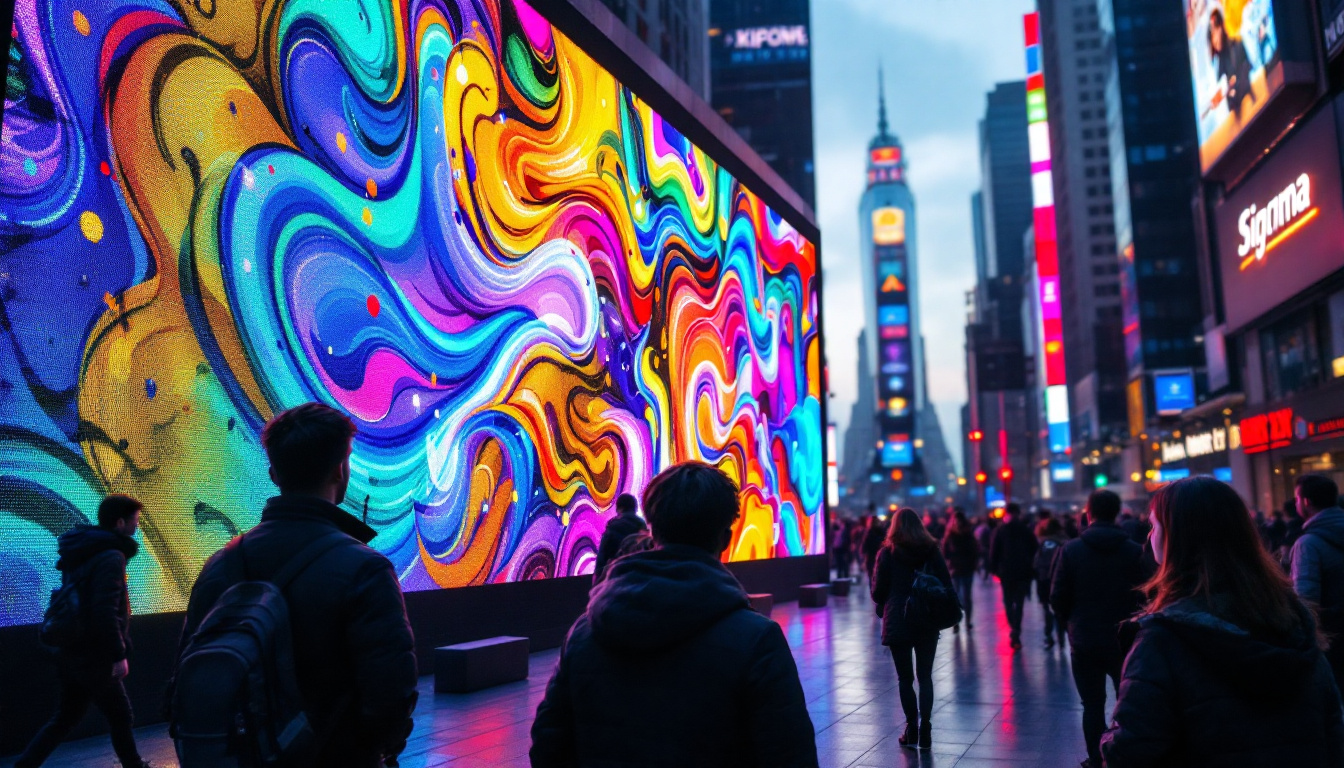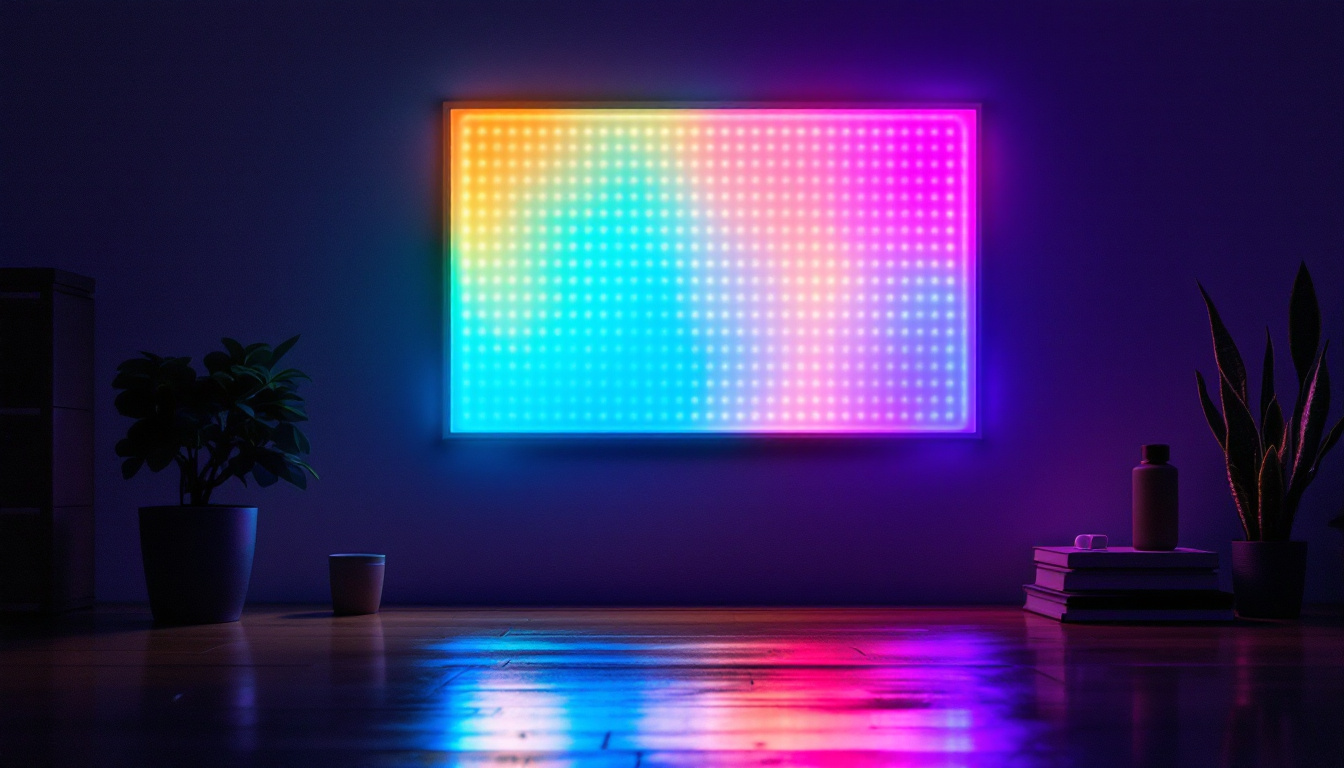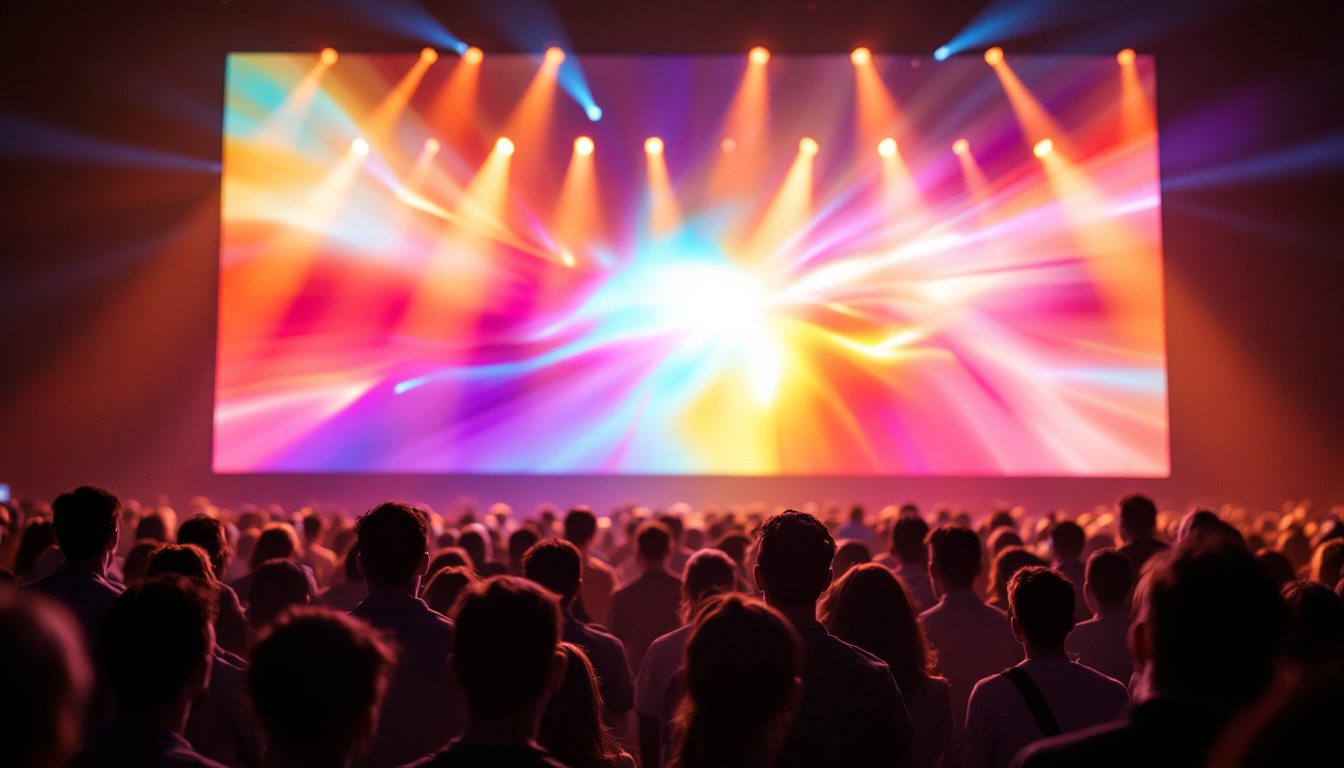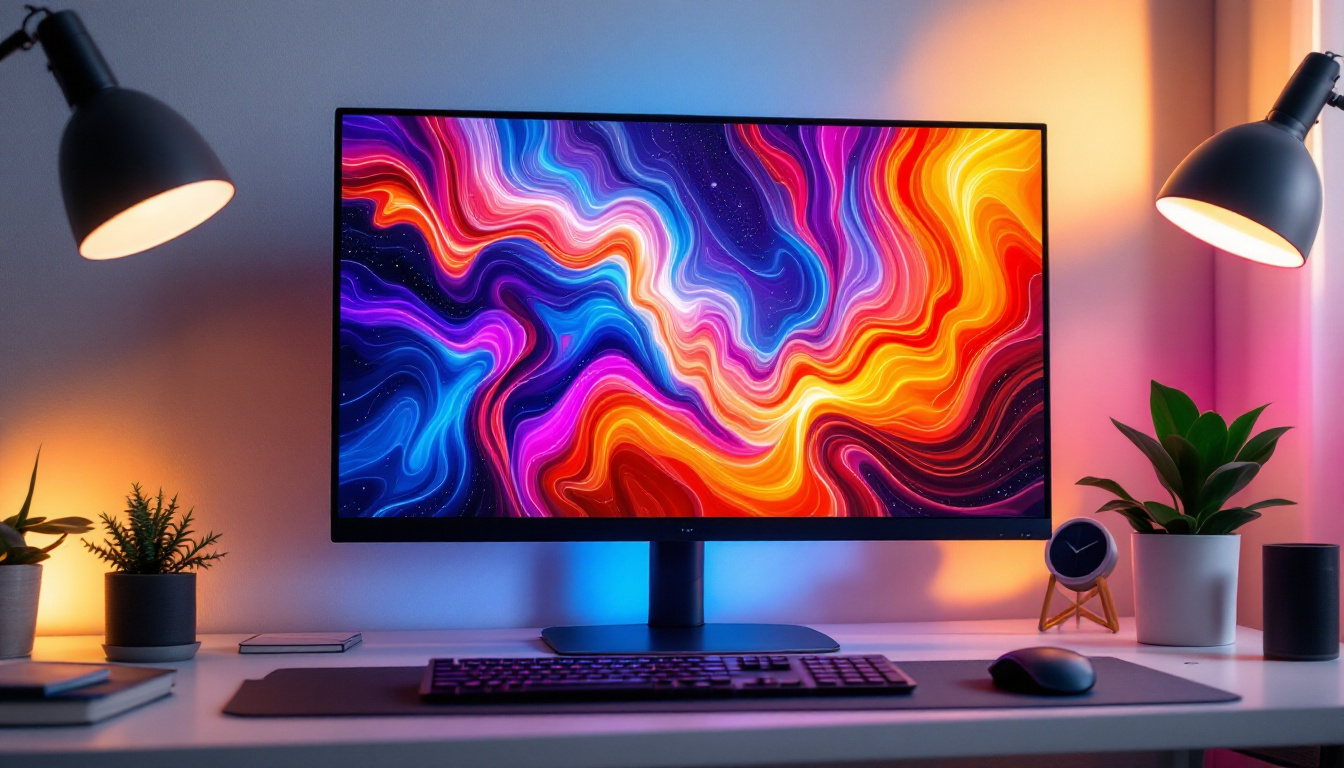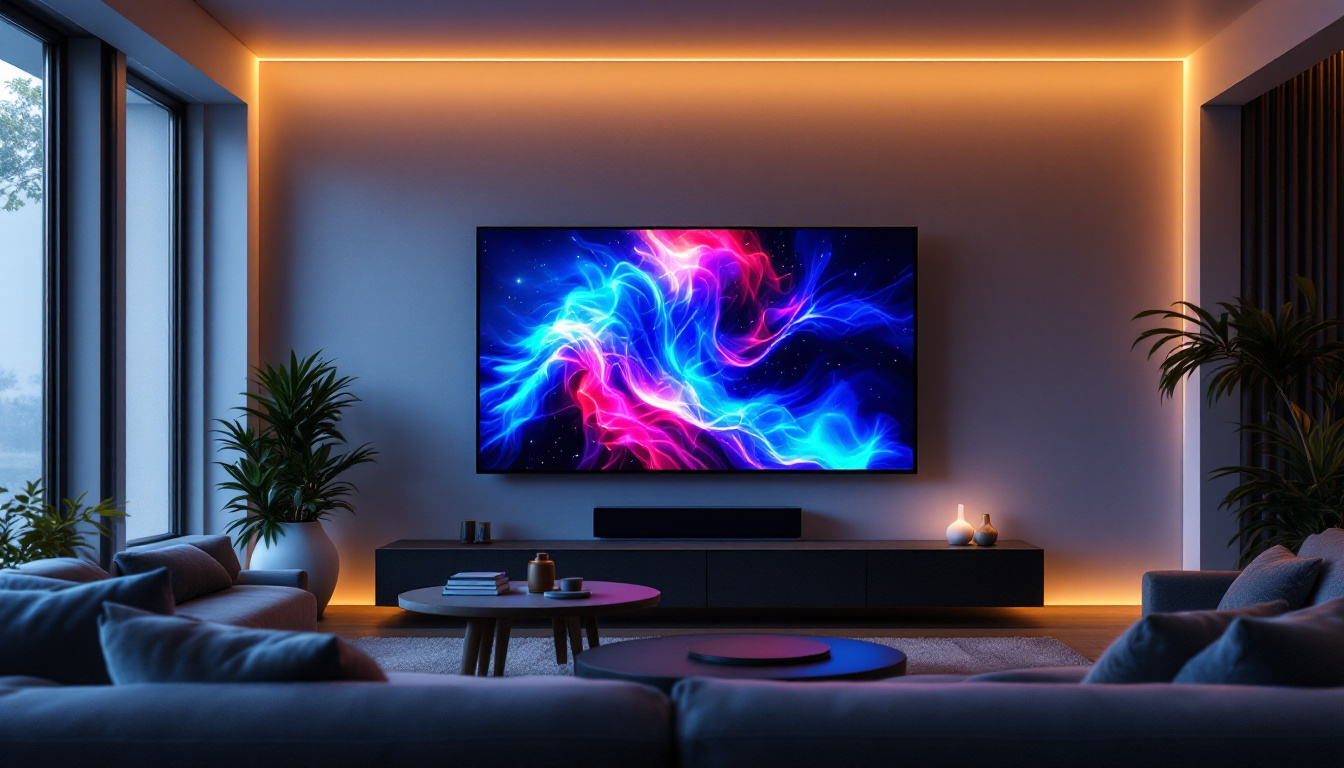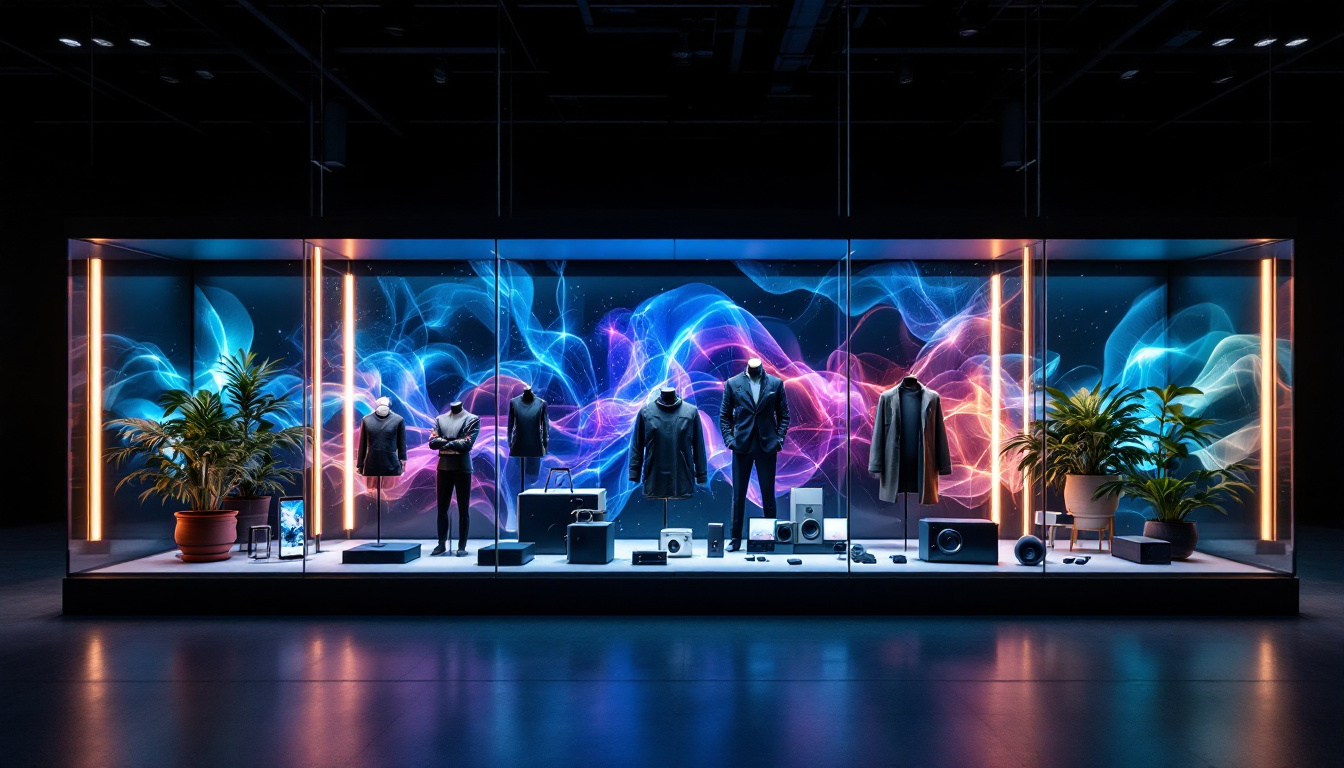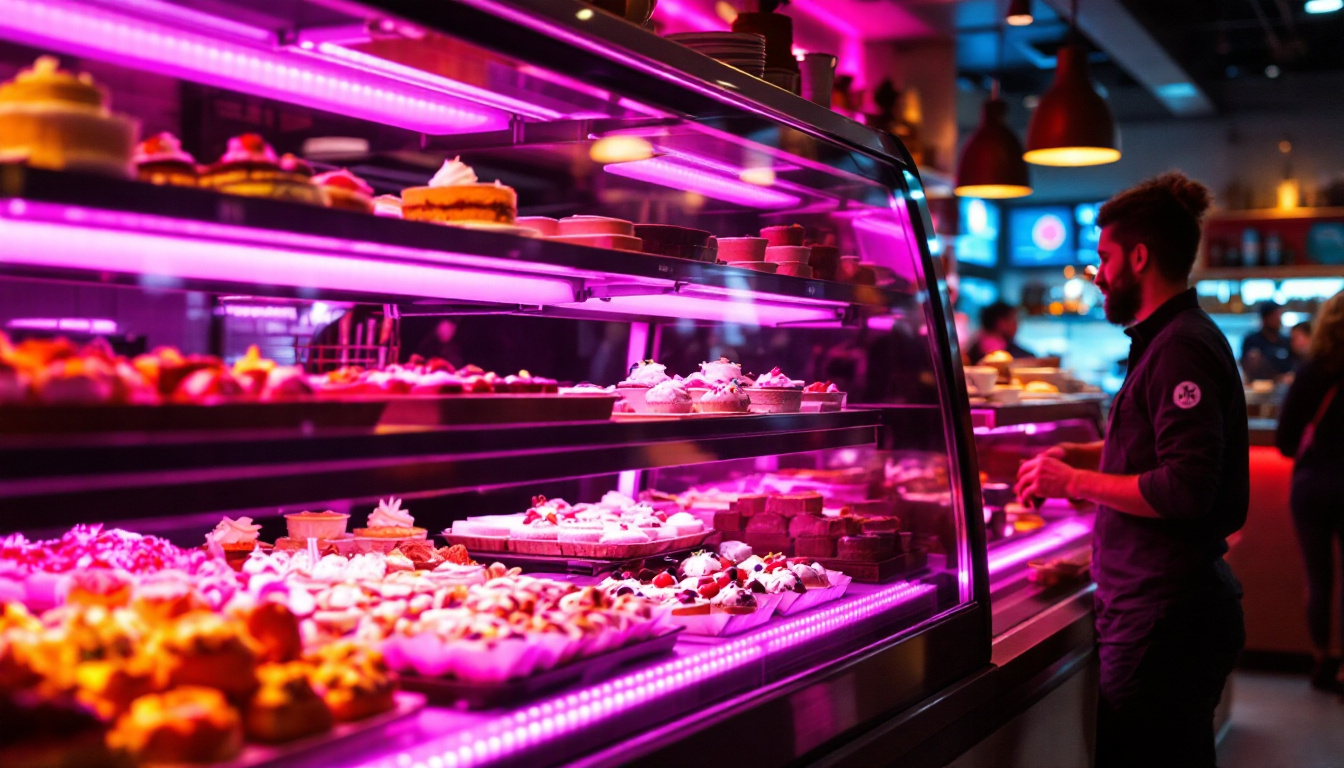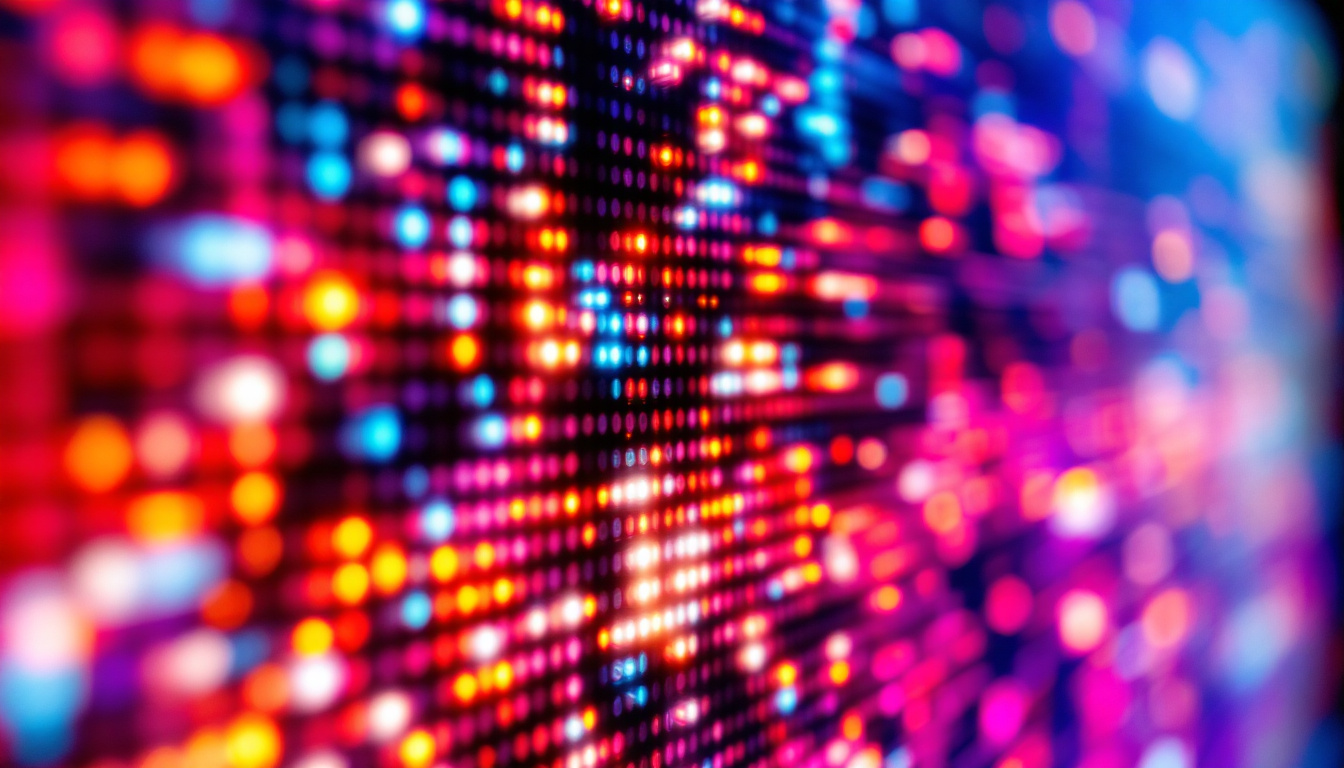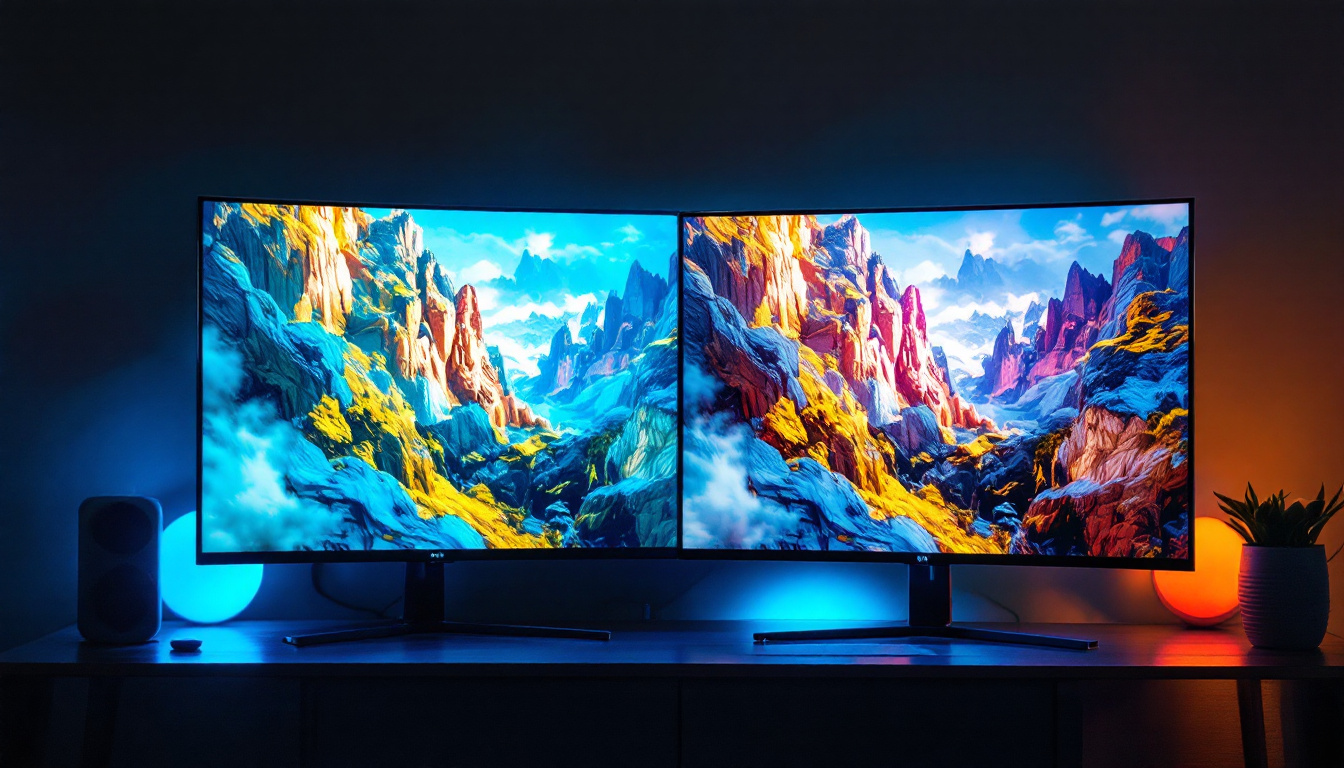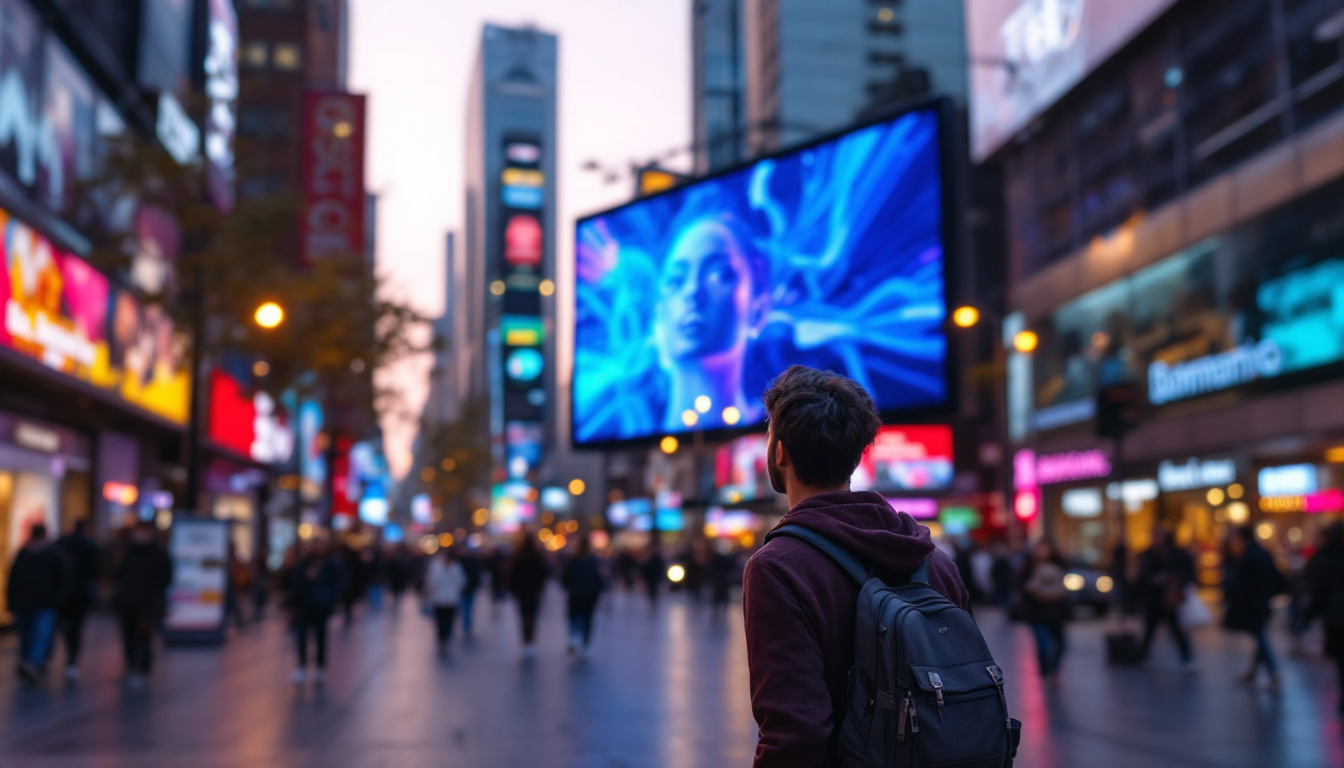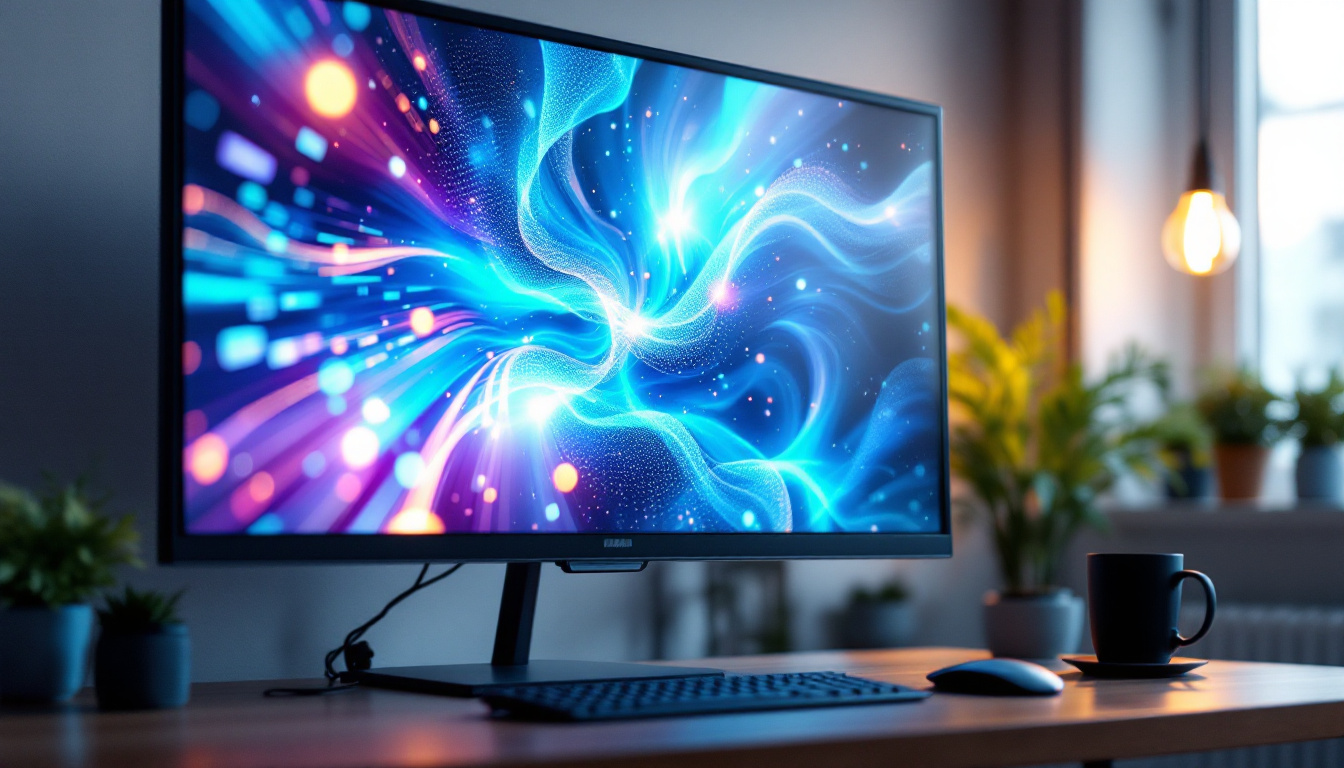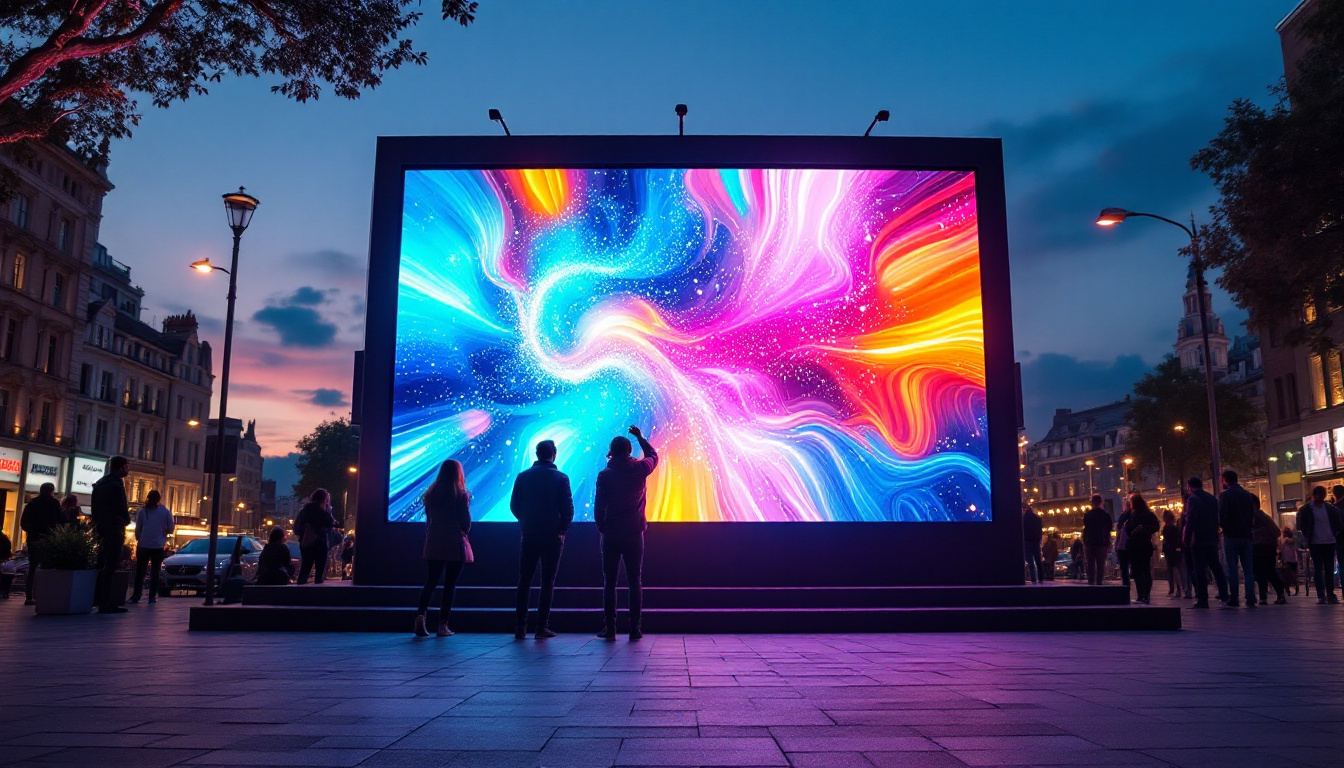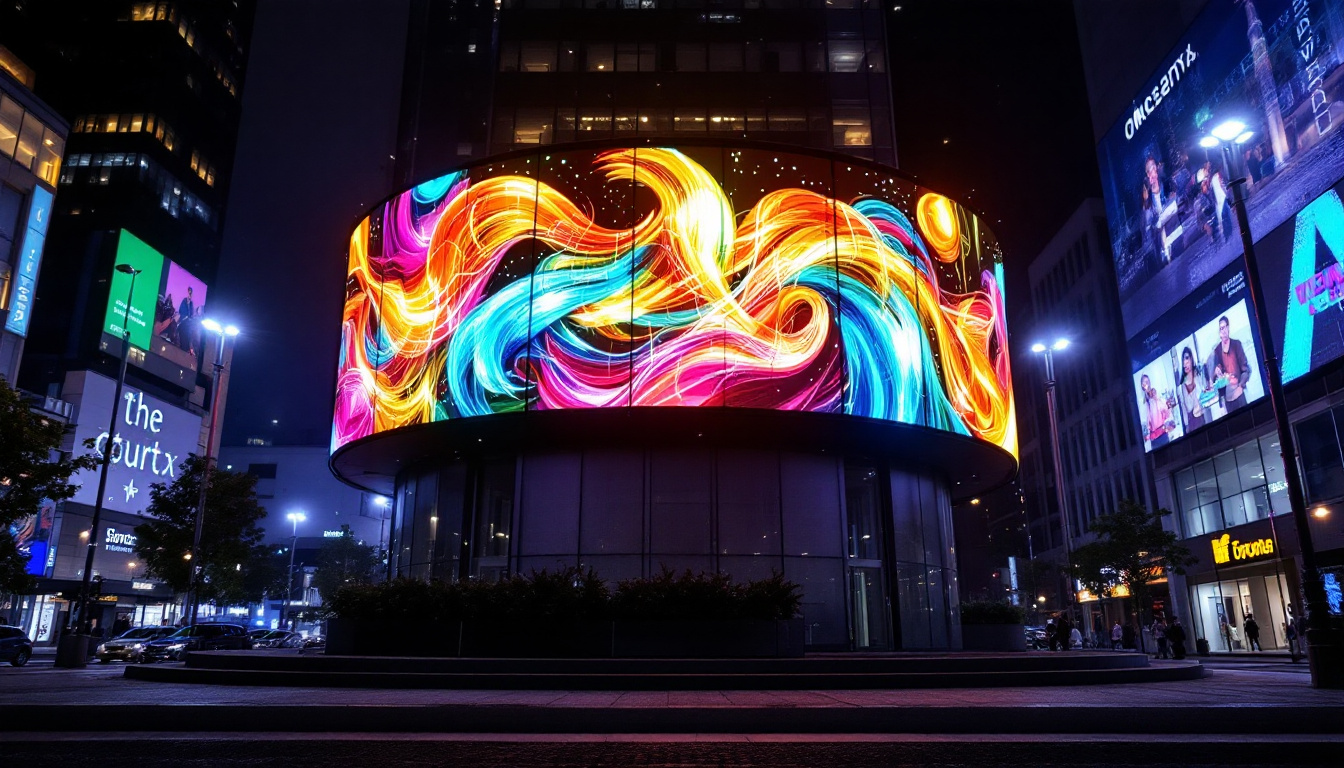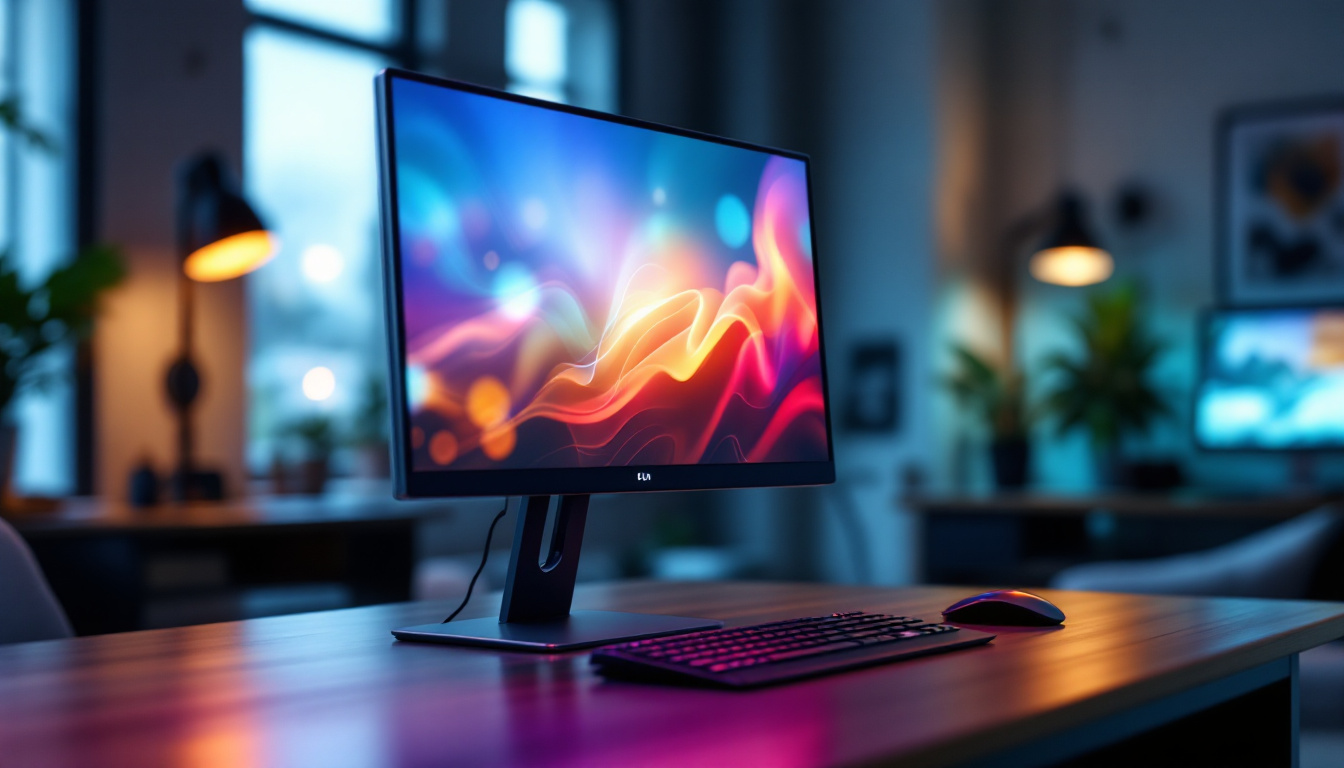In recent years, LED displays have revolutionized the way information is presented, transforming everything from advertising to entertainment. The vibrant colors, energy efficiency, and versatility of LED technology have made it a popular choice across various industries. This article delves into the intricacies of LED displays, exploring their types, applications, advantages, and future trends.
Understanding LED Technology
LED, or Light Emitting Diode, is a semiconductor device that emits light when an electric current passes through it. Unlike traditional incandescent bulbs that produce light through heat, LEDs operate at a lower temperature, making them more energy-efficient and longer-lasting. This fundamental difference is what sets LEDs apart and allows for their diverse applications. The efficiency of LEDs not only translates to lower energy bills but also reduces the carbon footprint associated with lighting, making them a more sustainable choice for both consumers and businesses.
The Science Behind LEDs
The basic principle of an LED involves the movement of electrons within a semiconductor material. When electrons recombine with holes (the absence of electrons), energy is released in the form of photons, which is visible light. The color of the light emitted depends on the materials used in the semiconductor, allowing for a wide spectrum of colors. This phenomenon is known as electroluminescence, and it is the cornerstone of LED technology. Additionally, the ability to manipulate the semiconductor materials has led to innovations such as tunable white LEDs, which can adjust their color temperature to mimic natural daylight or create a warm ambiance.
LED technology has evolved significantly since its inception in the 1960s. Today, advancements in materials and manufacturing processes have led to the creation of high-brightness LEDs that can be used in various applications, from simple indicator lights to large-scale displays. The ongoing research into quantum dots and nanotechnology is paving the way for even more efficient and versatile LED solutions, potentially revolutionizing how we think about lighting in the future.
Types of LED Displays
LED displays come in several types, each designed for specific applications. The most common types include:
- Direct View LED: These displays consist of individual LED modules that create images by directly emitting light. They are often used in large outdoor billboards and stadium screens, where visibility from a distance is crucial. The modular nature of direct view LEDs allows for easy scalability and maintenance, making them a popular choice for dynamic advertising and event displays.
- LED Backlit LCD: This type combines traditional LCD technology with LED backlighting, enhancing brightness and color accuracy. They are commonly found in televisions and computer monitors, providing users with vibrant visuals while maintaining energy efficiency. The backlighting can also be adjusted to improve contrast ratios, making it easier to view images in various lighting conditions.
- Organic LED (OLED): OLED displays use organic compounds that emit light when electricity is applied. They are known for their exceptional color reproduction and contrast ratios, making them popular for high-end televisions and smartphones. The flexibility of OLED technology also allows for the creation of ultra-thin and curved screens, pushing the boundaries of design and functionality in consumer electronics.
In addition to these common types, there are also specialized LED displays, such as transparent LEDs that can be used in storefronts to display advertisements without obstructing visibility. These innovative designs are gaining traction in retail environments, where attracting customer attention while maintaining an open feel is essential. Furthermore, advancements in pixel density and resolution are enabling the development of microLED technology, which promises even higher quality displays with lower power consumption, making them ideal for a variety of applications, from smartwatches to large-scale cinema screens.
Applications of LED Displays
The versatility of LED displays allows them to be utilized in various sectors, each benefiting from their unique characteristics. Here are some prominent applications:
Advertising and Marketing
One of the most visible applications of LED displays is in advertising. digital billboards and storefront displays attract attention with bright, dynamic content. Advertisers can easily update messages in real-time, allowing for targeted marketing campaigns that can change based on time of day or audience demographics.
Additionally, LED displays can be used for interactive advertising, where consumers engage with the content through touchscreens or mobile devices, creating a more immersive experience.
Entertainment and Events
In the entertainment industry, LED displays are a staple at concerts, festivals, and sporting events. They provide vibrant visuals that enhance the audience’s experience. Large-scale LED screens can display live feeds, graphics, and animations, creating a dynamic atmosphere that captivates viewers.
Moreover, many theaters and performance venues are incorporating LED technology into their stage designs, allowing for stunning backdrops and effects that were previously unattainable with traditional lighting.
Transportation and Public Information
LED displays are increasingly used in transportation systems for real-time information dissemination. Buses, trains, and airports utilize LED screens to display schedules, delays, and other essential information. Their visibility in various lighting conditions ensures that passengers receive timely updates.
public spaces, such as city squares and parks, also employ LED displays to provide information about events, weather, and emergency alerts, enhancing community engagement and safety.
Advantages of LED Displays
LED displays offer numerous advantages that contribute to their growing popularity. Understanding these benefits can help businesses and consumers make informed decisions when considering LED technology.
Energy Efficiency
One of the most significant advantages of LED displays is their energy efficiency. Compared to traditional lighting technologies, LEDs consume significantly less power, resulting in lower electricity bills and a reduced carbon footprint. This efficiency is particularly beneficial for large-scale installations that operate continuously.
Additionally, the long lifespan of LEDs—often exceeding 50,000 hours—means fewer replacements and maintenance costs over time, making them a cost-effective solution in the long run.
Brightness and Visibility
LED displays are known for their exceptional brightness, making them visible even in direct sunlight. This characteristic is crucial for outdoor applications, where visibility can be a challenge. The ability to adjust brightness levels according to ambient light conditions further enhances their usability.
Furthermore, the wide viewing angles of LED displays ensure that content remains clear and vibrant from various perspectives, making them ideal for large audiences.
Durability and Reliability
LED displays are built to withstand harsh environmental conditions, including extreme temperatures and moisture. Their solid-state construction makes them more resistant to shocks and vibrations compared to traditional displays. This durability ensures that they continue to function effectively in demanding settings, such as outdoor installations.
Moreover, the reliability of LED technology minimizes downtime, allowing businesses to maintain consistent messaging without interruptions.
Challenges and Considerations
While LED displays offer numerous benefits, there are also challenges and considerations that users should be aware of. Understanding these factors can help in making informed decisions regarding LED technology.
Initial Costs
The initial investment for LED displays can be higher than that of traditional display technologies. Although the long-term savings on energy and maintenance costs often offset the initial expenditure, businesses must weigh their options carefully. Budget constraints may limit some organizations from adopting LED technology, particularly smaller businesses.
Content Management
Effective content management is crucial for maximizing the impact of LED displays. Businesses need to invest in software and training to create, schedule, and update content efficiently. Without proper management, the potential of LED displays may not be fully realized, leading to missed opportunities for engagement.
Additionally, maintaining fresh and relevant content is essential to keep audiences interested. Static or outdated messages can diminish the effectiveness of LED displays and negatively impact brand perception.
The Future of LED Displays
The future of LED displays looks promising, with ongoing advancements in technology and applications. As industries continue to explore innovative uses for LED technology, several trends are emerging.
Mini and Micro LEDs
Mini and micro LED technologies are gaining traction, offering even higher resolution and improved performance. These smaller LEDs can be packed more densely, resulting in displays with greater pixel density and superior image quality. This advancement is particularly beneficial for applications requiring high-definition visuals, such as virtual reality and augmented reality.
As the technology matures, mini and micro LEDs are expected to become more affordable, making them accessible for a broader range of applications.
Integration with Smart Technology
As smart technology continues to permeate various aspects of daily life, LED displays are being integrated with Internet of Things (IoT) capabilities. This integration allows for real-time data sharing, remote monitoring, and automated content updates based on environmental conditions or audience behavior.
Such advancements enhance the interactivity and responsiveness of LED displays, creating more engaging experiences for users and audiences alike.
Sustainability Initiatives
With growing concerns about environmental sustainability, the LED industry is focusing on developing eco-friendly solutions. Manufacturers are exploring ways to reduce waste during production, improve recyclability, and utilize sustainable materials.
As consumers become more environmentally conscious, the demand for sustainable LED displays is likely to increase, prompting manufacturers to prioritize eco-friendly practices in their operations.
Conclusion
LED displays have undoubtedly transformed the landscape of visual communication, offering unmatched advantages in energy efficiency, brightness, and durability. As technology continues to evolve, the applications and potential of LED displays are expanding, paving the way for innovative solutions across various industries.
While challenges such as initial costs and content management exist, the benefits often outweigh these considerations. With ongoing advancements in mini and micro LEDs, smart technology integration, and sustainability initiatives, the future of LED displays is bright.
Whether for advertising, entertainment, or public information, LED displays are set to play a crucial role in shaping how information is communicated and experienced in the years to come.
Discover LumenMatrix’s Innovative LED Solutions
Ready to elevate your visual communication with cutting-edge LED technology? LumenMatrix is at the forefront of LED innovation, offering a diverse range of LED display modules tailored to your needs. From captivating Indoor and Outdoor LED Wall Displays to dynamic Vehicle and Sports LED Displays, and even customizable solutions like Floor LED Displays and All-in-One LED Displays, we have the technology to bring your vision to life. Embrace the future of digital signage with LumenMatrix and create unforgettable visual experiences. Check out LumenMatrix LED Display Solutions today and see the difference for yourself.

